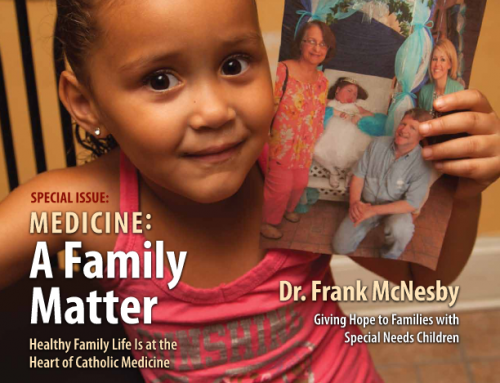March 14, 2020
As Coronavirus continues to spread across the United States, the Catholic Medical Association has called on its infectious disease specialists to compile some best practices to consider for celebrating Mass and preventing the spread of the disease (see below).
COVID-19, the disease caused by the novel coronavirus discovered in China in January 2020, has since spread to more than 100 countries, including the United States. The virus lives in the mouth, nose, and throat of infected persons and can cause severe lung infection; about 3.5% of reported cases have died.
The illness resembles influenza in many ways: in the fact that it lives in the nose and throat; its transmission by mucus and saliva particles passed from person to person by coughing, sneezing, or direct contact; and in its tendency to cause mild illness among children and more severe illness among persons over 60 and those with chronic medical conditions. Testing has only recently been available in the United States, and the virus now appears to be widespread here. Because attending Mass involves congregating with our fellow Catholics, many are wondering whether they could encounter the virus at Mass, and how to reduce their risk of getting it.
Please note these are tips and suggestions. For more information, consider visiting your local diocesan website or contacting your local diocese directly.
- Mass Attendance: If you are ill with a fever or cough, it would be prudent to stay home. If you are ill with what appears to be the common cold, try to sit at least six feet away from others. If you see someone with cough or cold symptoms, and especially if you are over 60 or have chronic medical conditions, try to distance yourself from them.
- Peace Handshakes: You can minimize your risk by nodding or gesturing rather than shaking hands. Many people commonly put their hands to their mouths or noses, and many viruses go from person to person through hand-to-hand contact.
- Communion: The General Instruction on the Roman Missal indicates that people may receive the Body of Christ either on the tongue or in the hand. Although virus may be present on someone’s tongue, distribution on the tongue rarely if ever results in the priest’s or the minister’s touching the hand. For this reason, either method should be safe from transmitting the virus from one communicant to another. Studies have demonstrated that bacteria and viruses can be found on the lip of the chalice even after wiping; but experts agree that the risk of infection is probably low. It may be lowered further if the Precious Blood is distributed along with the host through intinction by the priest. Remember, though, that since Christ is sacramentally present under each of the species, Communion under the species of bread alone makes it possible to receive all the fruit of Eucharistic grace (CCC 1390).
- Holy Water: Although it is theoretically possible to transmit respiratory viruses through the dipping of many people’s fingers into the holy water font, dilution and the fact that the hand makes the sign of the cross afterwards, rather than going directly to the mouth, nose, or eyes makes it extremely unlikely.

DOCTOR, DOCTOR: Special Episode on Coronavirus. Click here to listen and stay tuned for more episodes on this topic.
In the episode: Dr. Paul Carson, infectious disease and public health specialist, helps make sense of the coronavirus outbreak. He covers fact and fiction about what the disease is, how it’s spreading, and what everyone needs to know about prevention and treatment.FacebookTwitterCompartir
……………………………
US Catholic Conference of Bishops Statement on Coronavirus








